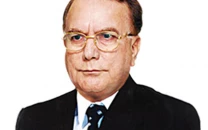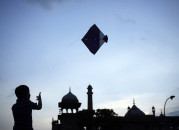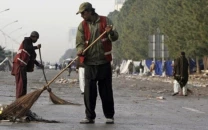Plan for automatic traffic signals ignored
Officials prefer large projects of flyover, underpass

No steps are being taken to modernise the traffic management system in Lahore by the multiple authorities responsible for the sector.
The traffic signals across the metropolis have not been upgraded to use smart technology due to poor planning by the provincial departments, local authorities and traffic police.
As a result, the traffic flow is frequently disrupted in almost the entire city. Traffic police personnel are forced to control the traffic manually after switching off the lights at the time of heavy flow of vehicles.
On the other hand, a few vehicles are seen waiting for several minutes for the green traffic light at roads with few travellers.
The lack of efficiency in the traffic management system results in wastage of fuel and time of the citizens and clogged roads. Planning to measure the traffic flow and manage the flow at the crossings accordingly ad different times of the day has not been made despite the increasing number of vehicles.
According to officials related to the field, European and other developed countries have separate departments for traffic law enforcement and management.
The same model was introduced in Lahore over 25 years ago. The responsibility of traffic signal management rested with the metropolitan corporation but them the Traffic Engineering and Planning Authority, Lahore Development Authority and Safe Cities Authority were also involved.
Millions of rupees were allocated in collaboration with the World Bank in 1993 for introducing an integrated traffic management system for which work was to be done in two phases.
Installation of automatic signals on major and busy roads was started in Phase-I. The lights had to operate automatically according to the traffic flow. The system was aimed at saving time as well as fuel.
Traffic on major routes of the city, including The Mall, Ferozepur Road, Jail Road, Gulberg and the cantonment area began to be controlled by the automatic system. Control rooms were to be set up along with the installation of automatic signals on other roads in Phase-II of the plan so that information from one point could be transmitted to others.
Under the plan, traffic in the whole city was to be controlled by traffic lights, which would also have been used to transmit information about crimes and encroachment.
Link to the traffic signals and cameras was to be given to the traffic police, metropolitan corporation and TEPA officers so that each department could collect the required information and work on it.
The installation of traffic signals at about 50 intersections had been completed, but a controversy ensued over differences between the various departments to manage the system.
Phase-I of the plan was halted after more than 80 percent of work had been completed, while the work on Phase-II could not begin and the World Bank project was shut down. Then the old traffic signals system was restored in the city, but the traffic police manually control traffic on most of the city’s roads.
A timing system has been installed at 25% of the traffic signals, where the duration of red and green lights increases and decreases in accordance with the flow of traffic. The old system is being used in the rest of the city.
Former chief engineer of TEPA Khushal Khan said while talking to The Express Tribune that the World Bank’s plan for traffic signals was very good. If it had been implemented, Lahore would have a modern traffic system. But unfortunately, the traffic management and police were merged. Instead of modern solutions, the officers preferred to build underpasses and flyovers, allegedly to create opportunities for corruption, which has severely affected the traffic system in Lahore.
However, Safe City Authority COO Kamran Khan said that due to construction of 21 underpasses and flyovers, the number of traffic signals was being significantly reduced. Automatic traffic signals have been installed on several roads of the city and work on more was under way.
He said the NOC was awaited for installation of traffic signals at Orange Line intersections.
Trying to a question, he agreed the traffic management and enforcement should be treated as separate functions.
Published in The Express Tribune, August 27th, 2021.



















COMMENTS
Comments are moderated and generally will be posted if they are on-topic and not abusive.
For more information, please see our Comments FAQ